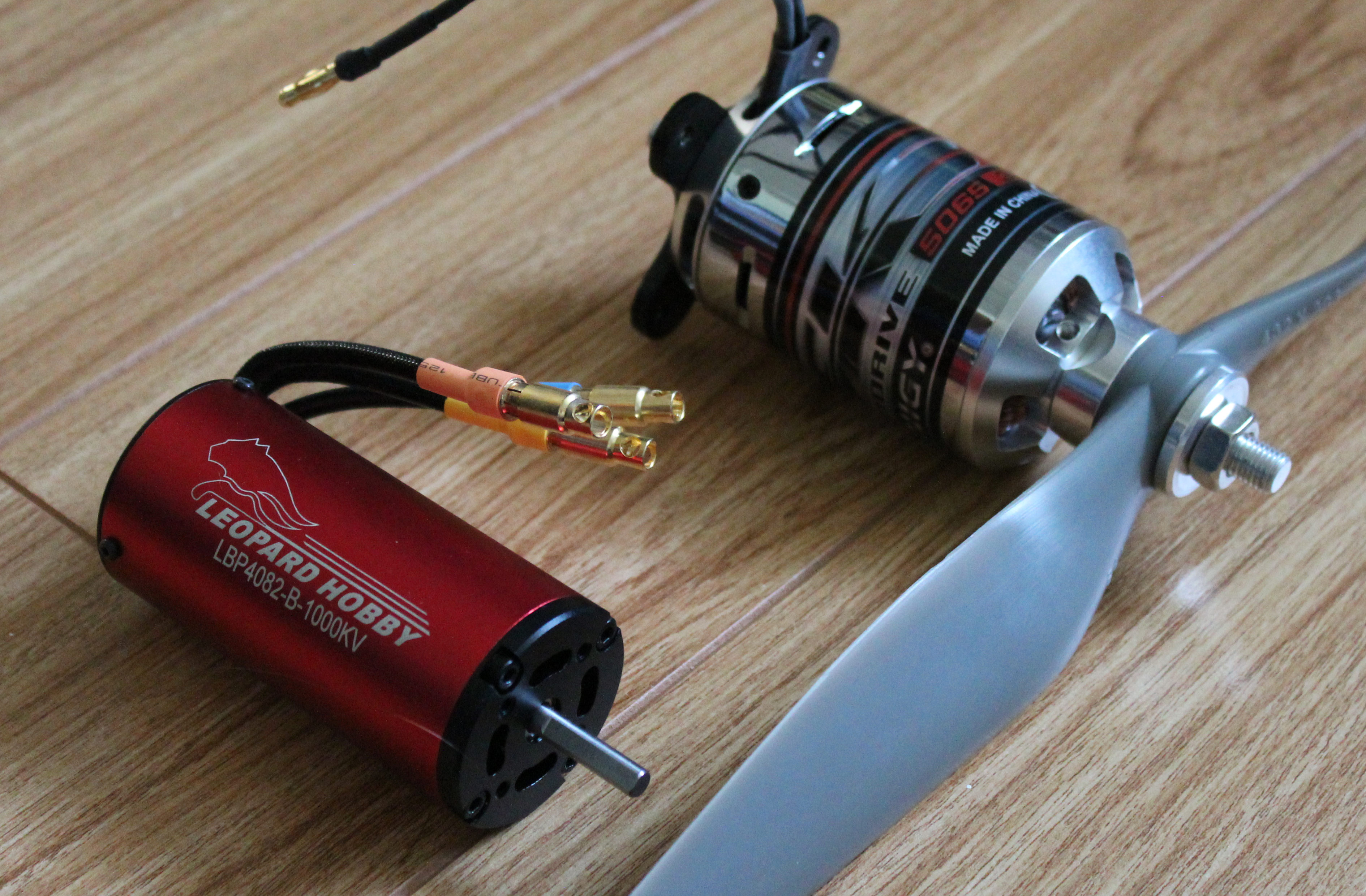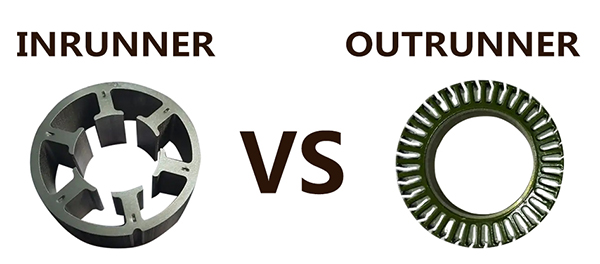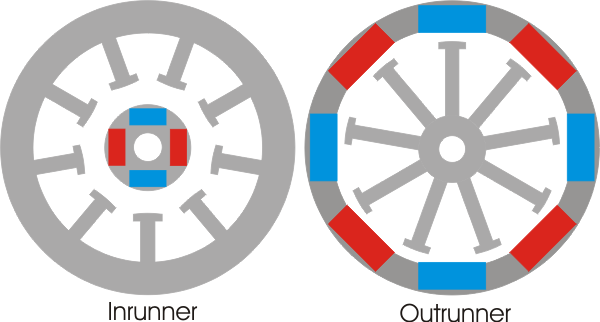Inrunners and outrunners are types of electric motors. Each has unique features.
In the world of electric motors, choosing between inrunners and outrunners can be tough. Both serve different purposes and excel in various applications. Inrunners are known for their high speed and precision, often used in RC cars and planes. Outrunners, on the other hand, offer more torque and efficiency at lower speeds, making them ideal for drones and electric skateboards.
Understanding the differences between these two motor types can help you make a more informed decision for your specific needs. This comparison will guide you through their key characteristics, advantages, and best use cases. By the end, you will know which motor is the right fit for your project.
Introduction To Motor Types
Choosing the right motor for your RC vehicle or drone can be a game-changer. Motors come in different types, and understanding the differences can help you make an informed decision. Here, we will introduce you to two main types of motors: Inrunner and Outrunner.
Inrunner Motors
Inrunner motors are built with the rotor inside the stator. This design makes them compact and efficient. They are often used in applications where high RPM (revolutions per minute) is needed, like in cars or boats.
One of the standout features of inrunner motors is their ability to handle high speeds without overheating. This makes them ideal for on-road RC cars that require quick acceleration and top speed. Think of them as the sports cars of the motor world.
However, inrunner motors may require more cooling and can be louder. If you’re racing in a confined space, you might want to consider these aspects. Have you experienced a motor overheating during a crucial race? It’s frustrating, isn’t it?
Outrunner Motors
Outrunner motors, on the other hand, have the rotor on the outside of the stator. This unique design offers more torque at lower RPMs. Outrunner motors are commonly used in applications like drones or airplanes where torque is more important than speed.
These motors excel in providing stable and powerful performance. They are quieter and often more durable because they run cooler. This could be your go-to option for a drone that needs to lift heavy cameras or perform intricate maneuvers.
Imagine having a motor that runs smoothly without making a racket. That’s the advantage of outrunners. Have you ever wondered why your drone loses stability mid-air? It might be the motor type.
In the end, the choice between inrunner and outrunner motors depends on your specific needs. Which one aligns with your requirements? Understanding the basics can save you time and improve your RC experience. So, what’s your next move?
Design And Construction
Understanding the design and construction of inrunner and outrunner motors is crucial for enthusiasts and professionals. Each motor type has unique characteristics that affect performance and efficiency.
Internal Structure
Inrunner motors house the magnets inside the rotor. The stator surrounds the rotor. This design keeps the motor compact and efficient. The rotor spins within the stationary stator, creating the motion needed.
Outrunner motors, on the other hand, have magnets on the outer casing. The inner core, or stator, remains fixed. This unique structure allows the outer shell to rotate. It generally provides higher torque at lower speeds.
Materials Used
Both motor types use high-quality materials for durability and performance. Inrunners often feature lightweight materials like aluminum for the casing. The rotor and stator use ferromagnetic materials for efficient electromagnetic fields.
Outrunners also use aluminum for the outer casing. The magnets are usually rare-earth types like neodymium. This ensures strong magnetic fields and high torque. The stator in outrunners uses high-grade steel laminations.
Performance Characteristics
Understanding the performance characteristics of Inrunner and Outrunner motors can help you choose the right one for your needs. These characteristics define how the motor behaves under different conditions. We will explore the speed, torque, and efficiency of both motor types.
Speed And Torque
Inrunner motors typically offer higher speed. Their design allows for faster rotation. This makes them ideal for applications needing quick movement.
Outrunner motors, on the other hand, provide more torque. Their design includes a rotating outer casing. This increases the leverage, resulting in higher torque. Outrunners are better for tasks requiring strong force.
Efficiency
Inrunner motors are generally more efficient at higher speeds. They have less friction due to their internal design. This means they use energy more effectively when rotating quickly.
Outrunner motors are efficient at lower speeds. Their design helps to minimize energy loss. They perform well in applications where sustained power is needed without rapid movement.

Credit: www.radiocontrolinfo.com
Applications And Uses
Understanding the applications and uses of Inrunner and Outrunner motors can help you choose the right one for your needs. Both types of motors have unique benefits and are suited for different tasks. Let’s explore where each motor excels.
Inrunner Applications
Inrunner motors are common in high-speed vehicles. They are often used in RC cars. Their design allows for greater RPMs. This makes them perfect for racing. Inrunners are also found in drones. Their high efficiency helps with longer flight times.
Many electric bikes use Inrunner motors. They provide the power needed for steep climbs. These motors are also popular in industrial applications. They are used in conveyor belts and other machinery. The consistent performance of Inrunners is valued in these settings.
Outrunner Applications
Outrunner motors are favored in model airplanes. They offer higher torque, which is ideal for propellers. This feature makes them great for helicopters too. Outrunners are also used in electric skateboards. Their high torque helps with acceleration and hill climbing.
These motors are beneficial in 3D printing. The precision they offer is unmatched. Outrunners are also found in wind turbines. Their design allows them to handle variable loads. This makes them perfect for renewable energy projects.
Pros And Cons
Understanding the pros and cons of inrunner and outrunner motors can help make better decisions. Both types have unique advantages and disadvantages that can impact performance and suitability. Let’s explore these aspects in more detail.
Inrunner Advantages And Disadvantages
Inrunner motors have several advantages. They are compact and fit well in confined spaces. Their higher RPMs provide better speed for certain applications. These motors also offer more precise control. This makes them ideal for cars and boats. Their efficiency at higher speeds is another plus.
Yet, inrunner motors have their drawbacks. They often require gear reduction systems. This adds weight and complexity. They also generate more heat. So, they need better cooling systems. These factors can increase overall costs.
Outrunner Advantages And Disadvantages
Outrunner motors also come with many benefits. They generate more torque at lower RPMs. This makes them perfect for drones and planes. They are simpler in design. So, they need fewer parts. Outrunners are also more efficient at lower speeds.
But, there are some disadvantages too. Outrunners are usually larger. So, they may not fit in tight spaces. They can also be less precise in control. This makes them less suitable for certain applications. Their design can lead to higher drag in some cases.

Credit: www.ato.com
Cost And Availability
When choosing between Inrunner and Outrunner motors, the cost and availability play a crucial role. Understanding the price differences and how easily you can find these motors is essential for making an informed decision. Below, we’ll delve into the specifics of these factors.
Price Comparison
Inrunner motors tend to be more expensive than Outrunner motors. This is because Inrunners are often built with higher precision and materials that can withstand higher RPMs. For example, a high-performance Inrunner motor for an RC car might cost you around $100, while a comparable Outrunner motor for a drone might only set you back $50.
However, the price difference also reflects the different applications and performance levels. If you need a motor that delivers high speed and torque for competitive racing, investing in an Inrunner might be worth the extra cost. On the other hand, if you are building a hobby drone, an Outrunner can offer good performance at a lower price.
Market Availability
Outrunner motors are widely available in the market. They are popular for applications like drones and electric planes, making them easy to find both online and in hobby stores. You can quickly get your hands on a variety of Outrunners in different sizes and power ratings.
Inrunner motors, while also available, are less ubiquitous. They are more specialized and often used in high-performance RC cars, boats, and certain types of drones. This means you might have to search a bit harder or go to specialized retailers to find the exact Inrunner motor you need.
Have you ever tried finding a specific motor for your project? How was your experience with availability and cost? Sharing your story can help others make informed decisions.
Maintenance And Durability
When comparing inrunner and outrunner motors, maintenance and durability are vital considerations. These factors impact the motor’s overall performance and longevity. Understanding the maintenance needs and lifespan expectations can help you make an informed decision.
Maintenance Needs
Inrunner motors are generally easier to maintain. Their design has fewer moving parts exposed to the environment. Cleaning and inspecting them is relatively simple. You often need to check the bearings and ensure there is no debris inside.
Outrunner motors, on the other hand, have the rotor on the outside. This design can collect more dirt and debris. Regular cleaning is essential. Ensuring the bearings are lubricated can help. This maintenance keeps the motor running smoothly.
Lifespan Expectations
Inrunner motors typically have a longer lifespan. Their enclosed design protects the inner components. Less exposure to the elements means fewer potential issues. With proper care, they can last many years.
Outrunner motors may have a shorter lifespan. The exposed rotor is more susceptible to wear and tear. Regular maintenance can help extend their life. However, they may need more frequent replacements. Ensuring proper care and cleaning is crucial.

Credit: drones.stackexchange.com
Choosing The Right Motor
Choosing the right motor for your project can significantly impact performance, efficiency, and overall success. Whether you’re building a drone, an RC car, or any other application, understanding the differences between inrunner and outrunner motors is crucial. Let’s delve into the key aspects to consider.
Project Requirements
Think about the specific needs of your project. Are you looking for high torque or high RPM?
Inrunner motors are known for their high RPM and are ideal for applications like fast-moving RC cars.
Outrunner motors, on the other hand, offer higher torque and are perfect for drones and other projects requiring stability.
Consider the weight of your project. Outrunners are generally heavier but provide more power.
If weight is a concern, inrunners might be a better choice.
Look at your project’s size constraints. Inrunners are typically more compact.
Outrunners can be bulkier, so ensure you have enough space.
Ask yourself: Do you need a motor that can handle variable loads?
Outrunners manage varying loads better due to their torque.
Personal Preferences
Your preferences play a significant role in choosing the right motor.
Do you prefer easy maintenance? Inrunner motors have fewer parts exposed, making them easier to maintain.
If you’re into DIY, outrunners might be more appealing due to their open structure.
Sound can be a factor. Inrunner motors tend to be quieter.
If noise is a concern for you, this might sway your decision.
What about installation? Inrunners are straightforward to install due to their compact design.
Outrunners might require more effort but offer customizable options.
Consider your budget. Outrunner motors are often more expensive.
Inrunners can be a cost-effective alternative if you’re on a tight budget.
Choosing between inrunner and outrunner motors isn’t just about specs; it’s about aligning with your project needs and personal preferences. What matters most to you in a motor? Take a moment to weigh these considerations and make a choice that best suits your unique requirements.
Frequently Asked Questions
What Is The Difference Between Inrunner And Outrunner Drones?
Inrunner drones have motors inside the rotor, offering high speed and efficiency. OutRunner drones have motors outside, providing higher torque and stability.
What Is The Difference Between Edf Inrunner And Outrunner?
EDF inrunner motors are placed inside the rotor, spinning the rotor externally. OutRunner motors have the rotor outside, spinning around the stator.
Are Outrunner Motors More Efficient?
Yes, OutRunner motors are generally more efficient. They provide higher torque and better cooling due to their design.
What Is An Outrunner Electric Motor?
An OutRunner electric motor has a rotating outer shell. The inner core remains stationary. This design offers high torque and efficiency.
What Is The Difference Between Inrunner And Outrunner Motors?
Inrunner motors have internal rotors. Outrunner motors have external rotors. Inrunners spin faster, outrunners have more torque.
Conclusion
Choosing between an inrunner and an outrunner depends on your needs. Inrunners excel in high-speed applications with limited space. Outrunners offer more torque and efficiency at lower speeds. Both have their strengths and best use cases. Consider your project requirements and budget.
Understanding these basics helps you make an informed decision. Happy building!



